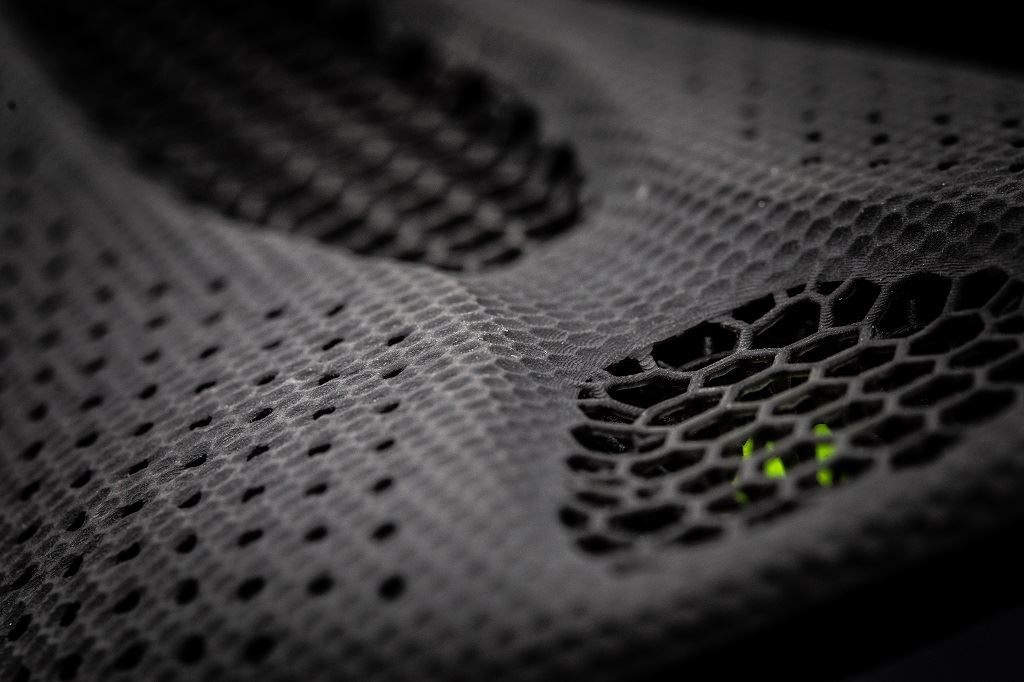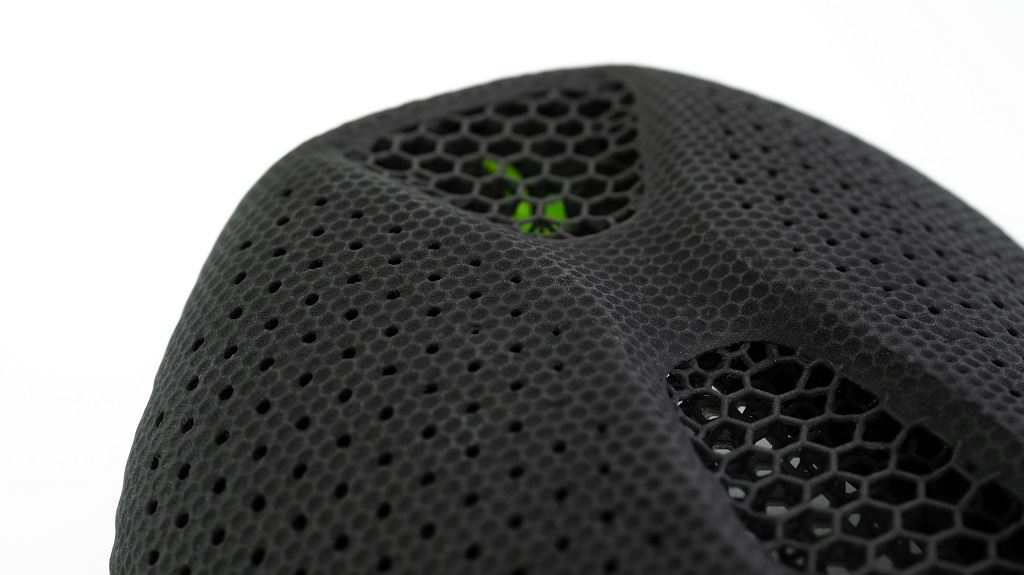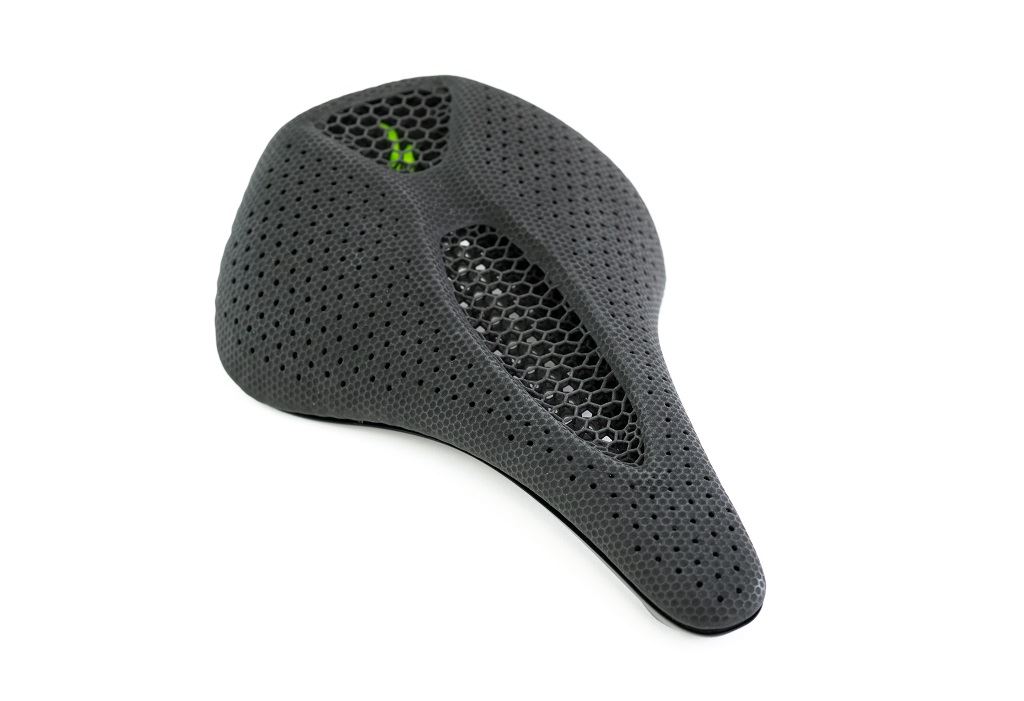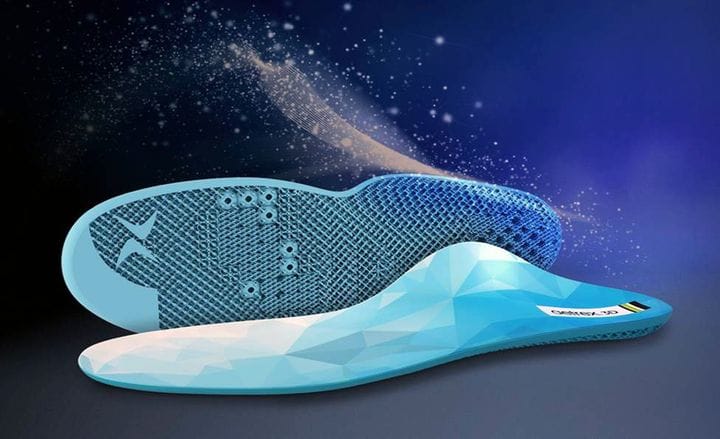![Specialized Rider Chris Blevins prepares to ride with the new 3D printed S-Works Power Saddle with Mirror Technology [Image: Carbon]](https://fabbaloo.com/wp-content/uploads/2020/05/SpecializedRiderChrisBlevins1_img_5eb0918d36456.jpg)
Shoes. Football helmets. Now, Carbon takes its Digital Light Synthesis 3D printing technology to cyclists with a 3D printed bike saddle.
Today the company announces its latest sporty partnership. Carbon is working with California-based Specialized to create “the first digitally printed bike saddle.”
Specialized, which seems to embrace the philosophy of “innovate or die,” has been working to create the best in biking since its founding in 1974. A quick browse through their site shows them to very much cater to serious cyclists; other bike saddles available in their shop retail for $145-$325. Not so much for the casual Sunday cycler, then, but a company that’s really specialized (oh, I get it) in creating advanced solutions.
Bike Saddle Technology



I recall cycling somewhat regularly, if casually, as a teen; I was delighted to learn after some months of my new mountain bike that shops sold gel-style seat pads to make the ride more comfortable. And that was as advanced as I ever got.
What can go into a bicycle seat to make it better? Quite a lot, actually.
Specialized has observed the pressure and discomfort cyclists can undergo due to less-than-optimal seating. These can lead to that tingly sensation to more serious health issues like neuralgia (nerve pain) and urinary problems. Enter science. Specifically, enter digital design.
The newest saddle from Specialized is the S-Works Power Saddle with Mirror Technology. Work with Carbon brings DLS into the picture, as their 3D printing technology enables a lattice design “that enables the saddle to rebound quickly, giving riders the experience of having a ‘suspension’ for their sit bones.”
The shape and structure of the new S-Works Power Saddle disperse the pressure of seating, absorbing impact and improving stability, as well as enhancing breathability of use.
![[Image: Carbon]](https://fabbaloo.com/wp-content/uploads/2020/05/ColorAdjusted1_img_5eb0918e88a78.jpg)
EPU material is used in the production of the new seats — the same elastomeric lattice structure and material Carbon has already deployed in high-profile applications with adidas’ FurtureCraft 4D midsole and Riddell’s SpeedFlex Precision-Fit Diamond helmet.
The seat also incorporates Mirror Technology — but the release from Carbon doesn’t detail what that entails, nor is it as yet described on Specialized’s site. We do have a brief mention from the company that also touches on Mirror Technology, but again, not much to go on for now:
“Specialized has a long history of improving the rider experience. We created our first Body Geometry saddle 25 years ago to address serious issues impacting cyclists. Together with Carbon, we are challenging the norms of the cycling world, from design to production time, to create technology that will allow riders to improve performance, increase comfort, and reduce the chance of injury,” said Garrett Gatter, Specialized Product Manager of Saddles. “With Mirror Technology, we’ve only scratched the surface of what’s possible.”
Making The Seat
![Pressure mapping the saddle [Image: Carbon]](https://fabbaloo.com/wp-content/uploads/2020/05/image-asset_img_5eb0918ed1f1b.jpg)
The S-Works Power Saddle, like its Carbon-powered forerunners, will be produced at scale using the L1 Production Solution introduced early this year.
The announcement notes that “Carbon DLS is helping to bring Mirror Technology to market in record speed.”
![Bike saddles on the L1 [Image: Carbon]](https://fabbaloo.com/wp-content/uploads/2020/05/S-WorksPowerSaddlewithMirrorTechnology41_img_5eb0918f26ee1.jpg)
Rather than the standard 18-24-month product development timeline, the Carbon/Specialized partnership readied — including more than 70 designed and tested prototypes — the new bike seat in the span of one year. Two months of that (reduced from a standard six months) were dedicated to the overall design process. Design iteration, allocated a standard two-to-three weeks of the process, came down to a single day.
Pricing hasn’t been announced yet for the new seat. It will be available in 2020.
Via Carbon and Specialized











The fate of major 3D printing conferences in 2020 is unclear with the ongoing virus outbreak. We have thoughts on what it could mean.